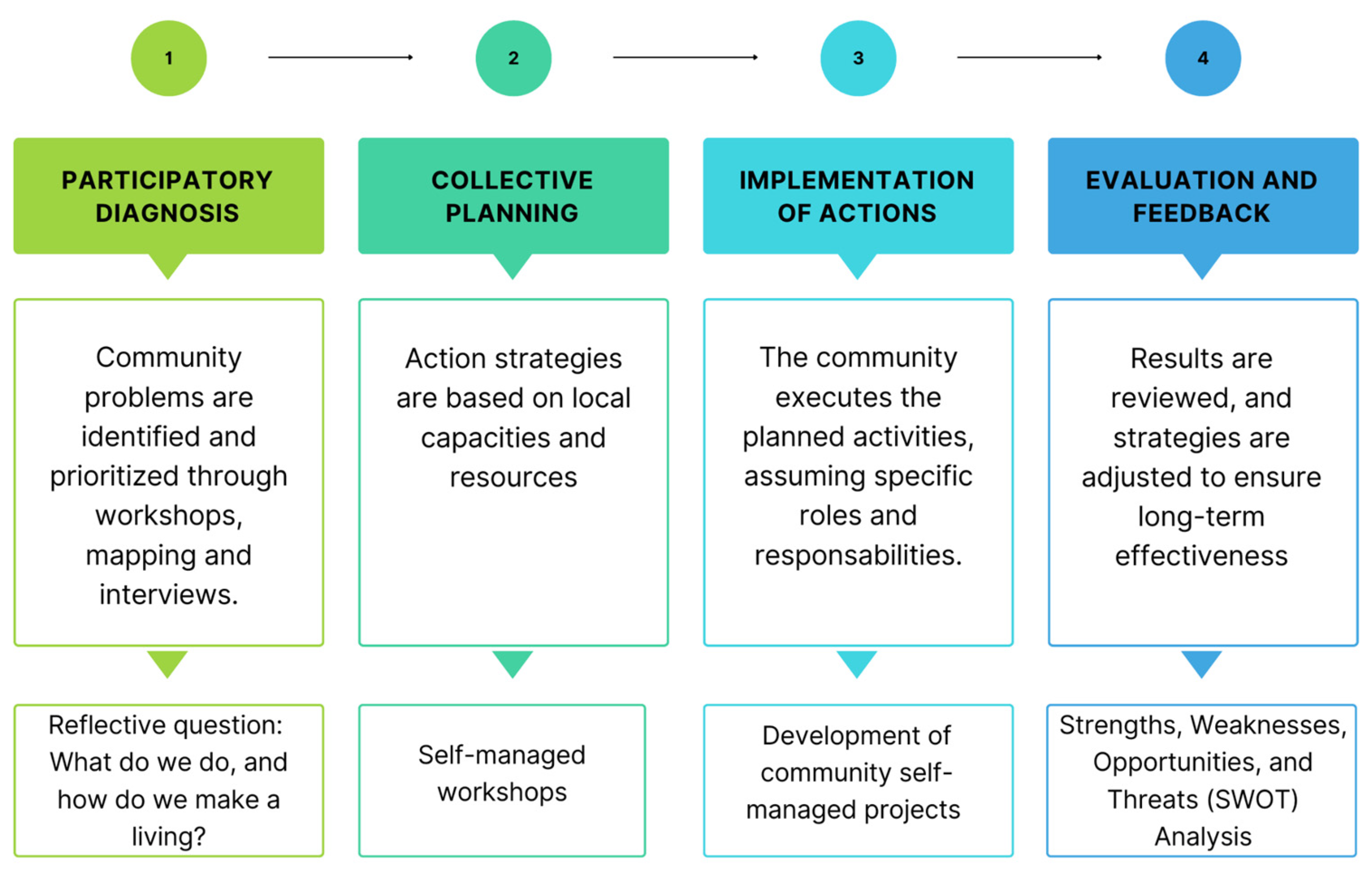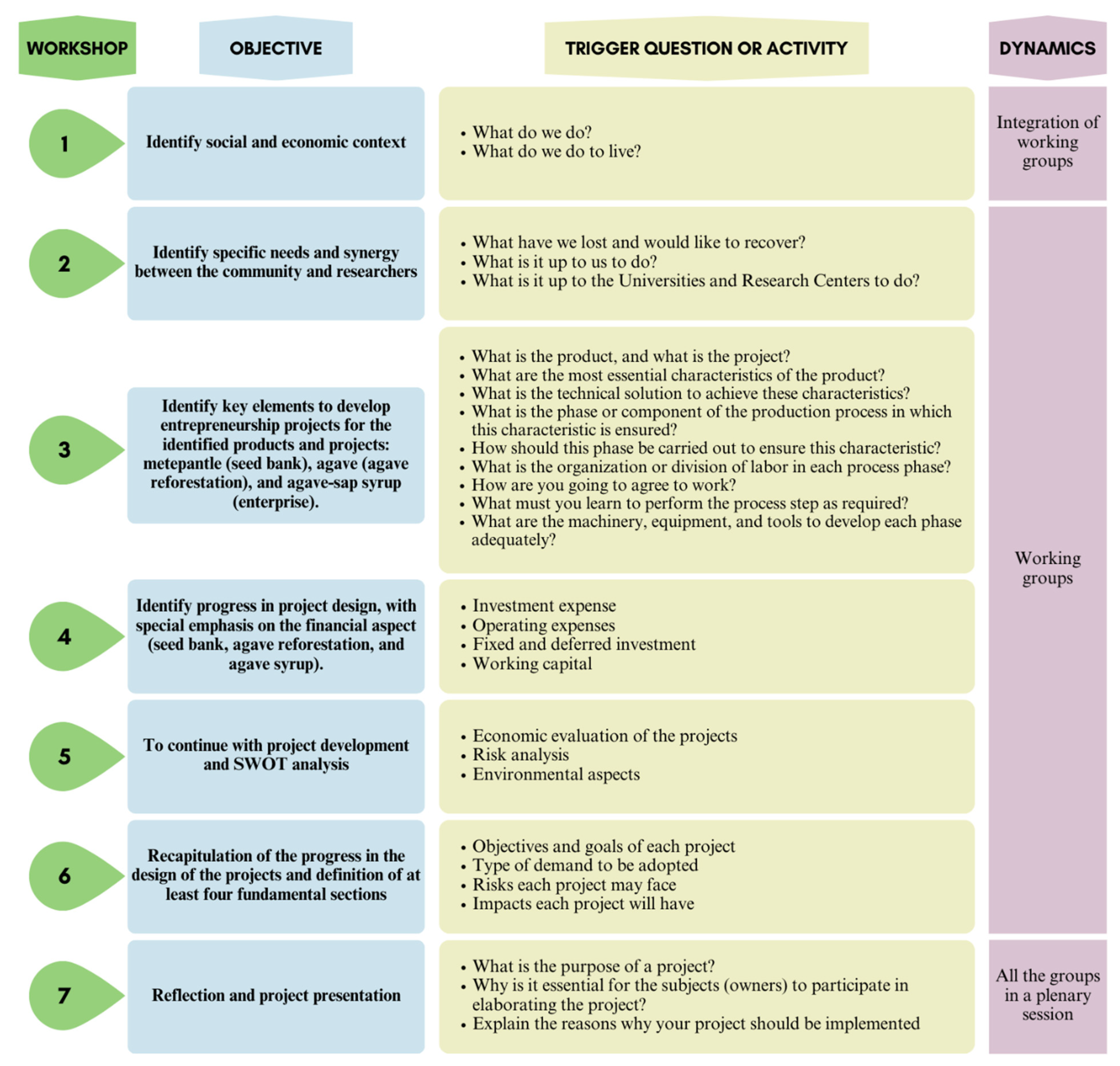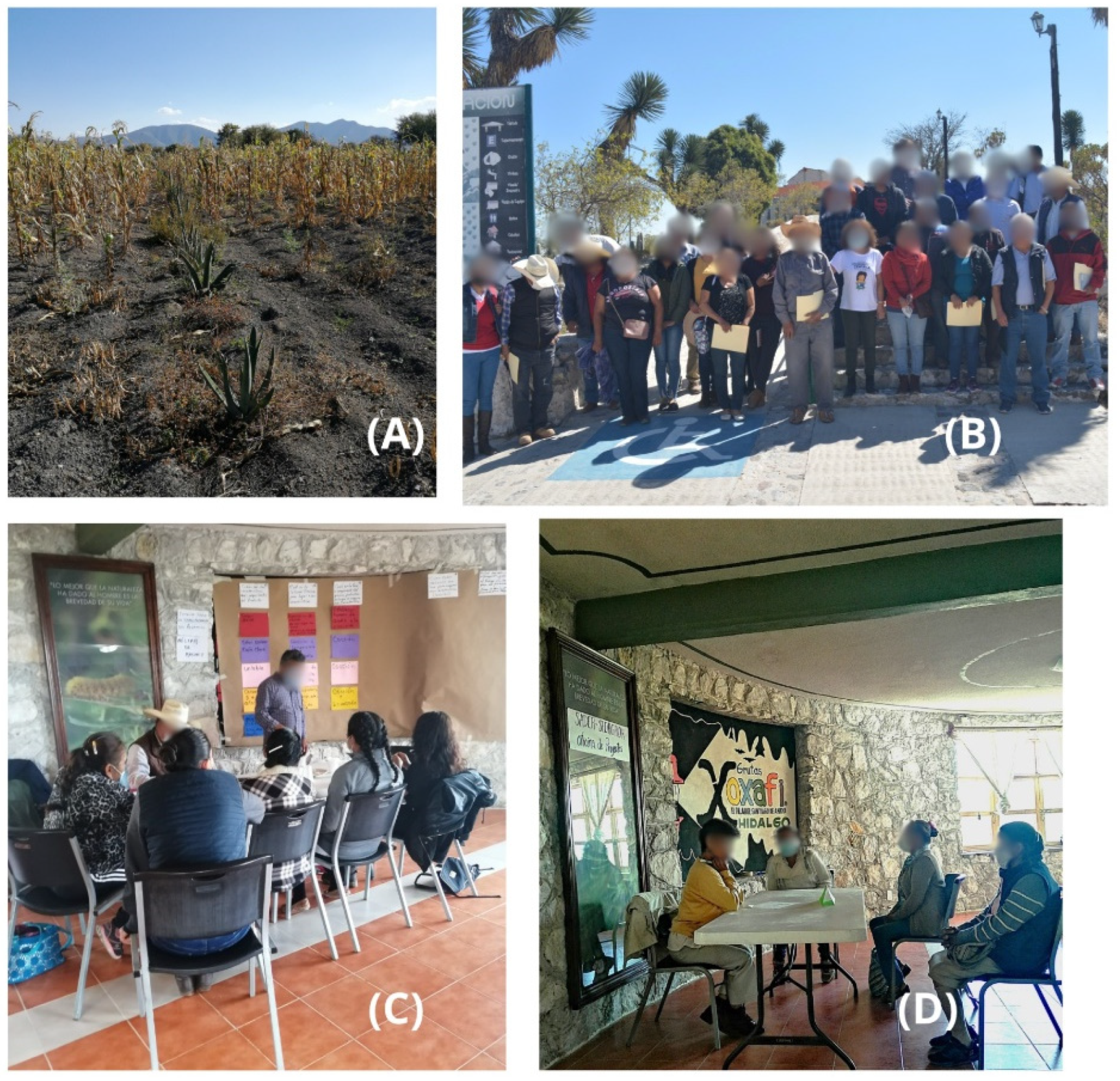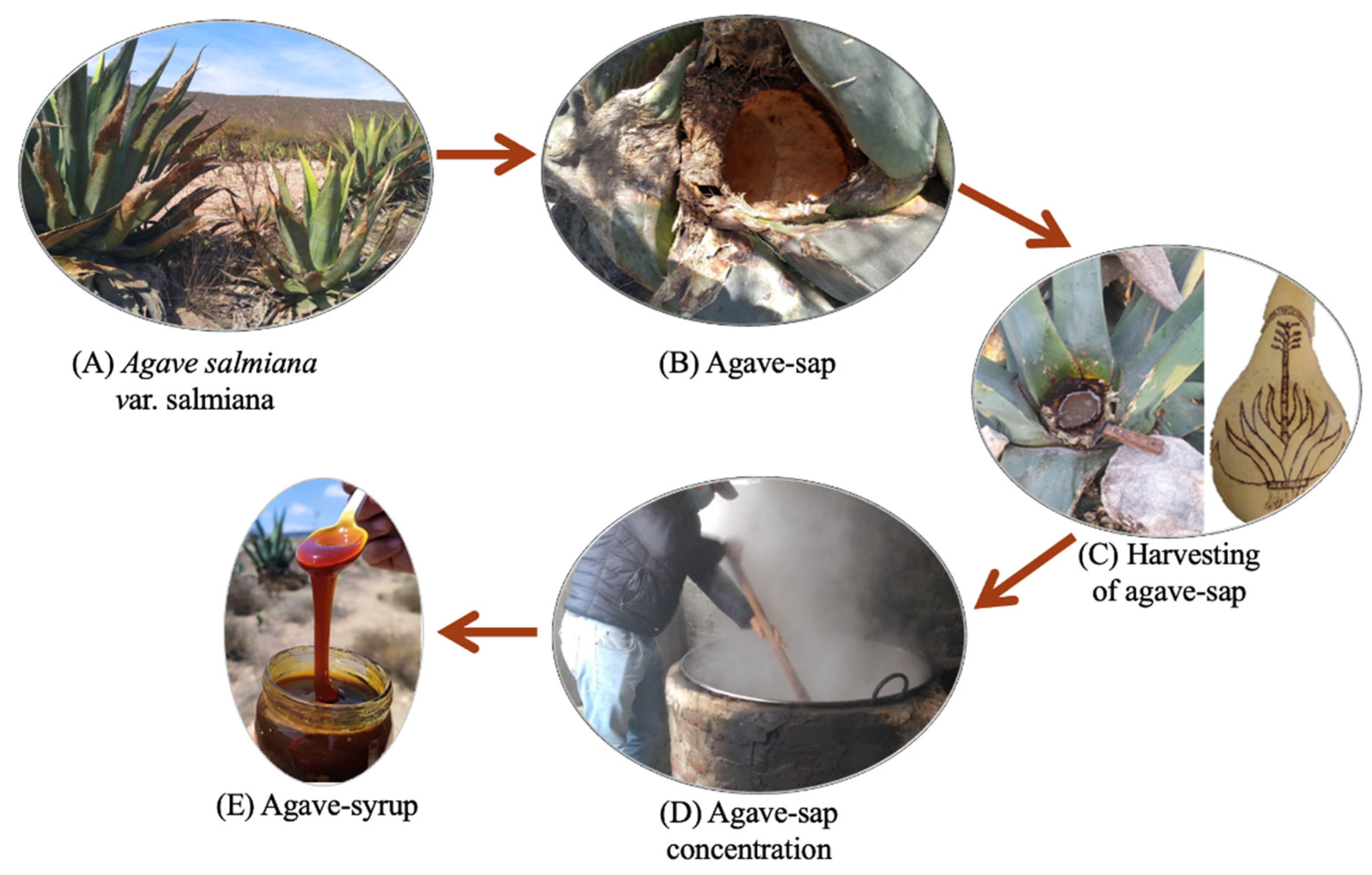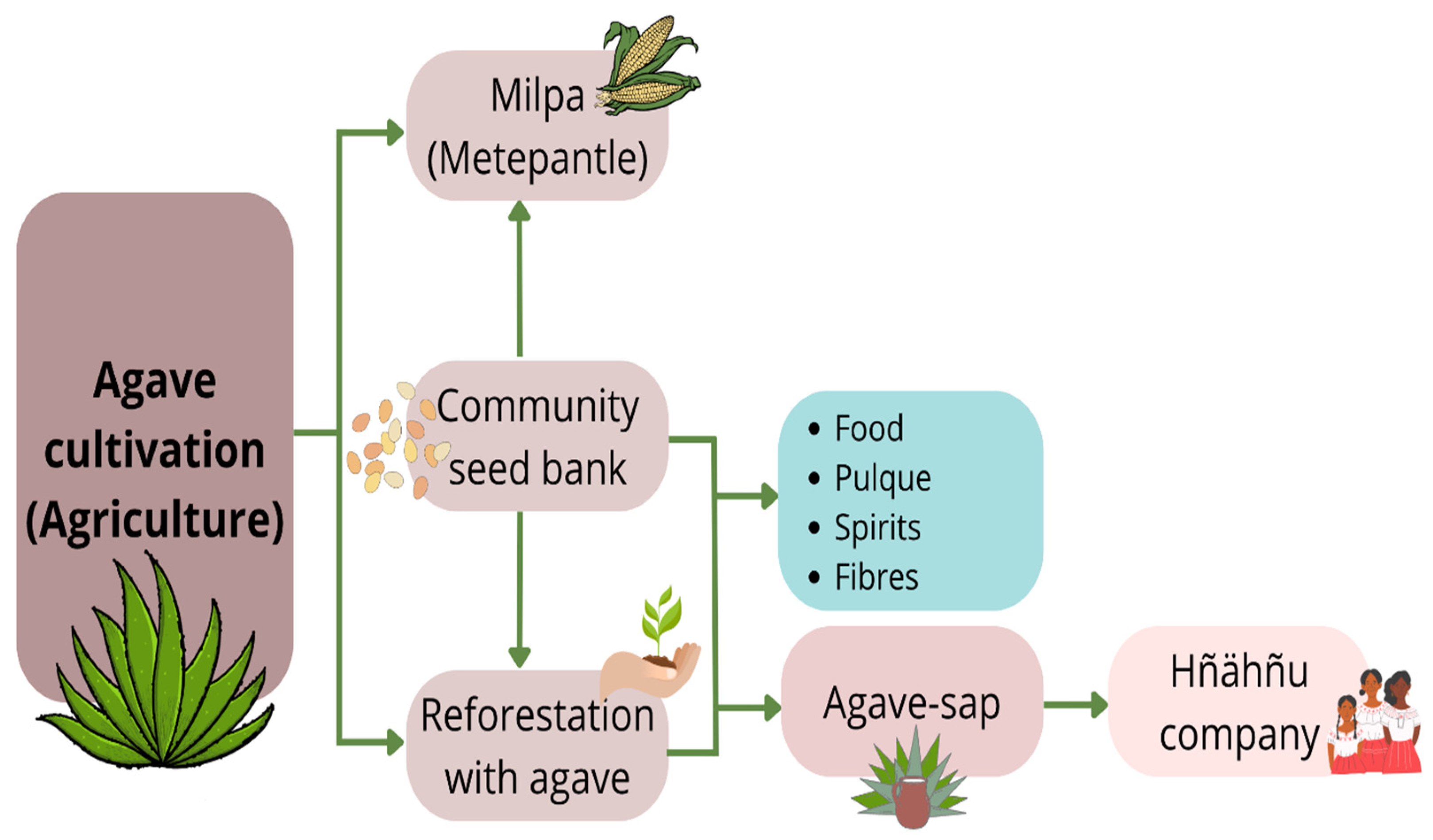1. Introduction
Developed and developing countries face environmental, social, and economic challenges, and most ecosystems that support life on our planet are overexploited; therefore, a shift in our global patterns of production, energy, and consumption is necessary, going from linear to circular and sustainable productive models. Meadows et al. identified the five fundamental factors that determine the limit of growth: population increase, agricultural production, non-renewable resource depletion, industrial output, and pollution generation [
1]. Each region and/or country has established different priorities for a transition to sustainable development. In the United States, the conversion of lignocellulosic biomass to biofuels was prioritized, while in the European Union (EU), life sciences were fundamental for a knowledge-based bio-economy based on non-edible biomass to produce industrial goods and services through biorefineries, integrating, in this way, horizontal value chains [
2,
3,
4]. In addition, in the EU, an agroecological vision is a means for sustainable and equitable food, dietary fiber, and energy provision based on diversified low-input agricultural systems and short supply chains (for a review, see [
5]).
The vision for Latin America and the Caribbean is different since this is one of the most inequitable regions of the world [
6] (p. 9). According to the Economic Commission for Latin America and the Caribbean (ECLAC), the main constraints in the region are “low productivity and an infrastructure deficit, segregation and lags in the quality of health and education services, persistent gender gaps, inequalities affecting minorities and geographical territories, and impacts of climate change that are felt most heavily by the poorest sectors in society” [
6]. Among the highlights of the Forum of the Countries of Latin America and the Caribbean on Sustainable Development by ECLAC, some of the most important priorities are “Fostering the integration of social, environmental and economic dimensions of sustainable development in a holistic and cross-sectoral focus on the eradication of poverty in all its forms and dimensions, the promotion of sustained, equitable and inclusive economic growth, including sustainable consumption and production patterns, the reduction of inequalities and the promotion of social inclusion, the recognition of cultural diversity and the role of culture as a crucial enabler of sustainable development, the protection and sustainable use of the environment, and the promotion of well-being in harmony with nature” [
6]. Therefore, the transition to sustainable development should be based on an integral vision at regional and local levels, including local bottom-up initiatives. Due to traditional agricultural systems, ancestral knowledge, native seeds, and the social organization of Indigenous communities, biodiversity-based farming systems are an option for local food production and distribution systems, agrobiodiversity conservation, and ecosystem services [
6]. The convergence of traditional knowledge and modern science and technologies is essential for improving the living conditions of Indigenous communities and all humanity. Some productive models have been developed, including new variables such as culture, territoriality, and bio-formation [
7,
8].
In Hidalgo, Mexico, 12.3% of the population is Indigenous, and the municipalities of Cardonal and Santiago de Anaya in the Mezquital Valley are respectively made up of 59.8% and 49.6% Otomí people (Hñähñu). The communities of both municipalities experience problems related to poverty, migration, lack of basic infrastructure, massive migration to the USA, and climate change. Moreover, the region is semiarid, and their crops depend on rain, but the average rainfall is 200 mm/year; the soil is alkaline and poor in organic matter. Therefore, the sustainable development of these communities is a challenge.
Since for the Hidalgo government, the sustainable development of Indigenous communities is a priority, the objective of this research was to test if participative workshops coming from the ideas and knowledge of Hñähñu communities with the researcher’s technical accompaniment is an effective approach for developing the entrepreneurship agriculture initiatives of self-managed social enterprises to solve local problems and promote rural sustainable development.
4. Results
The working groups (
Figure 4) proposed three initiatives of self-management social enterprises to resolve local problems and improve the families’ income. They were related to
Agave salmiana var salmiana, also known as “maguey pulquero” [
33]. “Pulque” is a non-distilled alcoholic beverage produced by spontaneous fermentation of agave sap. It is worth mentioning that Mexico is the center of origin of
A. salmiana.
The initial question in the first workshop was as follows: What do you do for a living, and what could you do to improve your way of life? (
Figure 3). The participants centered their answers on agriculture. They proposed (1) a community seed bank of local corn landraces and other local seeds associated with the milpa, (2) reforestation with
A. salmiana for ecological restoration of degraded soils and income generation, and (3) a Hñähñu company for producing agave sap syrup.
4.1. Community Seed Bank In Situ of Corn Landraces and Seeds Associated with the Milpa
Milpas are ancestral polyculture agroecosystems cultivated by smallholders in rain-fed plots throughout different ecosystems in Mesoamerica. This polyculture allows small-scale farms to produce diverse food products throughout the year and contributes to food security. In the classic milpa, corn is intercropped with beans and squashes, but there are a lot of different associated crops [
34]. In semi-desert areas like the Mezquital Valley, agaves are intercropped with corn, beans, squash, and other crops. The aim of the project is the recovery of the milpa and the associated knowledge, conservation, and production of quality seeds of the local corn, beans,
A. salmiana, and other landraces, which allowed food self-sufficiency in the past [
35].
The project includes at least three stages. In the first, the producers explain how they selected and kept their seeds and the problems they had (mainly insect pests). Afterward, they are trained in the selection and storage of seeds. The second stage is training to install and manage the community seed bank for the regional producers, where seeds are received, tested for seed health, registered, and stored. The third is a pilot test; the bank provides producers with seeds, and after the crop, they give back a kilogram of seed per kilogram they receive and share their experience with producers from other places to create a demand for seeds for sale.
The community seed bank will be in El Palmar, Santiago de Anaya. Five women and 15 men participated in the project, providing 8 ha for production and a barn for the bank. They organized a solidarity group for the first and second stages of the project, which included conservation and training. In the third stage, when a demand exists and the bank sells seeds, a cooperative, a Rural Association of Collective Interest, or another organization will be constituted.
It was not possible to calculate the financial viability indicators of this project because it is in the initial stage, and the community does not have experience; even the working group could not fix a price for the corn and other seeds because of the existence of barter-trade. Indeed, they interchange seeds with family, friends, and producers. In addition, the demand for seeds is unknown. The group just calculated the total cost for seeding the 8 ha of corn, including tools, seeds, and wages; it was about USD 11,000.
4.2. Reforestation with A. salmiana for Ecological Restoration and Income Generation
A. salmiana (“maguey pulquero”) is produced from “aguamiel”, which is the agave sap accumulated in a cavity formed when the apical meristem is removed. This agave is a crop associated with milpa for soil restoration, keeping water, and mobilizing phosphorus to corn and other associated crops. Hidalgo is Mexico’s primary producer of this agave and “pulque”. Agave is very important for the rural economy and has multiple applications for producing fibers, food, and feed.
This primary production project aims to reforest 10 ha with agave for degraded soil regeneration, water, local fauna conservation, and the sale of agave sap, leaves, and agave offshoots. In addition, the project aims to encourage the agave agroecological techniques typical of the Hñähñu culture and strengthen the associates’ organizational, technical, and business management capacities and the maguey value chain. Reforestation will occur on El Palmar, Santiago de Anaya, and San Andrés Daboxtha, Cardonal plots. The producers decided to plant 2 ha per year for 8 years, the time required for the agaves planted in the first year to produce “aguamiel”. From the fourth year, at least 20% of the agave offshoots produced will be sold to other communities for cultivation, and about 5000 leaves will be sold annually per hectare for cooking traditional foods. In the eighth year, 8000 L of “aguamiel” will be sold daily. The conventional channels already existing in the region will be used for marketing. As production increases, “pulque” will be produced and sold to restaurants. The Rural Association will sign contracts to supply its products on a bigger scale and integrate more producers to expand the cultivation surface. This project could create about 40 jobs annually, and 50% of the soil will recover its fertility in the next 10 years. Of note, the project is a source of employment and positively affects the environment.
The total investment in 10 years is USD 175,655 per ha, the fixed investment is USD 134,100, the deferred investment is USD 16,250, and USD 25,305 is required for working capital. The cost structure for the 8 years of the project is shown in
Table 1 due to the life cycle of the
A. salmiana. Regarding the cost structure, 68% corresponds to paid wages, 2% to unpaid wages, 3% to machinery rental, and 27% to inputs. Of the sales values, 72% come from agave sap, 4% from leaves, and 24% from agave offshoots. The annual flow analysis indicates that the income increases slowly during the first 3 years and is more considerable and stable between the fourth and seventh years. It jumps in the eighth year due to the sale of agave sap. The project represents a substantial advantage for family income since they can begin to receive about USD 6500 per hectare per year from the middle of the production cycle. Regarding profitability, the cost-benefit ratio is 1.27, and the ROI is 55%. The project is economically feasible since IBC > 1, ROI > MARR, and NPV has a positive value.
The group of producers will be formally established in the second year, and 100% of the partners will be trained in integral management of the plantation in the first 3 years. In addition, they will design other projects related to the transformation and commercialization of products and by-products derived from the maguey and invest their profits in the project.
4.3. Hñähñu Company to Produce Agave-Sap Syrup
The agave-pulquero syrup, also known as agave honey by the Hñähñu people, is a traditional food that has been produced by the Hñähñu women from
A. salmiana for centuries. The traditional recipe to concentrate the “aguamiel” is transferred from mothers to daughters. The honey is consumed and sold by the family. It is worth mentioning that this syrup is different from the agave syrup widely distributed in the Mexican and international markets and is produced from the heart of
A. tequilana Weber var. azul, whereas the “aguamiel” accumulates in the cavity of
A. salmiana after the apical meristem is removed from a mature agave (
Figure 5). The agave syrup from “aguamiel” does not have a market outside the communities since most outsiders do not like the burn and bitter taste [
36].
The harvesting of
A. salmiana “aguamiel” and the artisanal production of this agave syrup are shown in
Figure 5. The central leaves of mature agaves are cut, and the apical meristem is removed to prevent flowering and sugar accumulation in the stem. The sap accumulates in the cavity and is sucked out with the “acocote”. In the artisanal process, the sap is concentrated in a cauldron heated with firewood and continuously stirred with a wood shaving for at least 8 h (
Figure 5).
The project participants (seven women and seven men) decided to establish the production facility in San Andrés Daboxtha, Cardonal. To obtain an IBC = 1, minimal production of 7800 L of agave syrup and 78,000 L of “aguamiel” is required, generating revenues from about USD 100,000. In order to get a positive IBC, two hectares of agave-producing “aguamiel” is the minimum required amount needed to cover this sap demand. In the facility, women will need to process 6500 sap liters monthly in a 200 m2 building, with four 100 L stainless steel cauldrons, a packing machine, some basic laboratory equipment for quality control, and a small office that will be installed in the building.
The fixed investment is USD 44,403, the deferred investment is USD 6500, and the working capital is USD 86,609. The total investment is USD 137,512. The analysis of the projected financial viability indicates a high sensitivity to the prices of the final product; slight variations in the price have a tremendous negative or positive impact on the profitability indicators. Therefore, a strategy to secure sales prices through contracts in advance is indicated only to produce what has been contracted. Otherwise, the risk of having a high inventory is severe in the event of a price drop.
The agave syrup produced from
Agave tequilana is the main competitor for Hñähñu’s syrup, and therefore it is hard to ensure commercial success for this project besides the self-consumption for the families and the internal market in the communities. Thus, we advise the group to produce a differentiated product with better characteristics than the agave syrup already in the market, which goes with the modification of the artisanal process to improve the yield of syrup from “aguamiel” and reduce the time of the syrup production process, and to design a market strategy to access high-value markets. In addition, the syrup must fit the NOM-003-SAGARPA-2016 for agave syrup [
37] (Official Mexican Standards NOM).
5. Discussion
The entrepreneurial initiatives emerging from the Indigenous communities meet specific social, environmental, and economic needs according to their territories and culture. The three projects from the workshops cover these needs, as discussed below.
The participants argued for the community seed bank: “We need to recover the milpa and our seeds because they are our food. This food is natural and healthier than the food we buy in the stores; our corn is what we eat”. These arguments are related to their culture and food security. On the other hand, the community benefits are the recovery of the milpa, their corn, and other landrace seeds and the production in situ of these seeds, which will be available when the crop is lost due to scarce rain and other abiotic and biotic factors. Since these local seeds are not commercially available, and some are endangered, the impact is the conservation of landraces and availability of quality seeds that will help the farmers obtain good crops and contribute to food security. Thus, the effects are on biodiversity, the environment, and agriculture to improve food security and the family economy. Another impact is that through the community seed bank, the producers will be aware of the importance and value of their germplasm and will take care to prevent biopiracy. This is important to recover the values of the community and ensure that the rest of the population recognizes the importance of the Indigenous communities. Community seed banks emerged at the end of the 1980s, supported by international and national nongovernmental organizations, mainly in Bangladesh, Brazil, Ethiopia, India, Nepal, Nicaragua, the Philippines, and Zimbabwe [
38]. In 2005, in Mexico, the first community seed banks were established in Oaxaca. The Seed Basket Network was established as part of the national strategy for in situ conservation and to support farmers in areas exposed to natural disasters [
39]. The Mexican community seed banks are integrated into the network of conservation centers of the National System of Plant Genetic Resources for Food and Agriculture (SINAREFI) [
40]. However, various banks were established by the producer’s communities without external support.
Regarding reforestation with
A. salmiana, the producer’s reasons to justify this initiative were as follows: “There is a lack of agave plants; agave is needed for the soil restoration, re-covering our culture and traditions, as well as improving our economy”. The lack of agave plants is due to several pests, phytopathogens, and illegal removal of plants to obtain agave worms and leaves for commercialization. The project includes traditional agriculture practices to control pests and phytopathogens, so the benefits for the community are the recovery of soil health for agriculture, the creation of jobs, and a family income of about USD 6500 per hectare per year starting in the middle of the production cycle. This initiative meets the community’s specific social, environmental, and economic needs. The impacts are the building of local organizational and entrepreneurial capacities, strengthening the community, and improving the family’s income. Hidalgo is one of the Mexican States with high migration to the USA; many of the immigrants come from Indian communities, with most of them from the Mezquital Valley; an increment in family income would indirectly decrease the migration since the young will have access to education and reach a decent standard of living in their communities [
41]. In addition, the project contributes to food security since agave is part of the milpa [
35].
The women argued for the Hñähñu company to produce agave-sap syrup, saying, “Agave honey is very nutritious; our people have consumed it for centuries, and we learned how to produce it from our mothers and grandmothers. Because our soil is very poor and there is no water, agave is one of the few plants that grow. We produce and sell agave syrup to sustain our families, and our children take it as school lunch”. However, they only sell a few liters of syrup because there is no market. The actual price of “aguamiel”, the raw material for it, is 0.25 US dollars per liter, and the agaves must be 8 to 12 years old to produce it. If a market is established, the main benefits for the community would be creating jobs, increasing the participant’s income, establishing a fair price for “aguamiel”, and incentivizing agave cultivation. Since this project depends on the agave culture, the impact would be strengthening the collaboration between the members of the communities to increase the production of agave, reinforcing their entrepreneurial capabilities to manage their social enterprises, and indirectly contributing to food security through extending the “metepantle” culture. Like the other projects, this project meets specific social, environmental, and economic needs.
The three projects integrate an
A. salmiana value chain (
Figure 6). A horizontal value chain is understood as the articulation and collaboration between different industries or sectors to generate synergies and shared benefits by promoting the exchange of knowledge, optimization of resources, and joint innovation to strengthen the competitiveness of the actors involved [
42,
43]. In this study, the three projects integrate a value chain of
A. salmiana articulating productive activities. Thus, this chain is different from the productive process’s value chains. The first economic activity of the
A. salmiana value chain is agave cultivation; the next three are the seed bank, milpa cultivation (“metepantle”), and reforestation (
Figure 6). The seed bank (project 1) offers producers agave seeds and plants with a phytosanitary quality, adding value to the agave and the other seeds, including corn. The other activity is the milpa (“metepantle”), an agroecological system based on traditional knowledge whose value is recuperating this knowledge, and the added value is producing organic products. The third activity is reforestation with
A. salmiana (project 2) using traditional agriculture techniques based on moon phases and natural fertilizers; therefore, the added values are the production of organic agave, soil restoration, and the creation of jobs. The “aguamiel” is obtained from the agaves from “metepantle” and those cultivated for reforestation, and it is the raw material for the Hñähñu company to produce the syrup (project 3). The “aguamiel” sales represent 72% of the income of project 2, and the value of the syrup is 5.4 times that of “aguamiel”. Thus, the economic activity of agave syrup adds value to “aguamiel”, in addition to creating jobs and producing a traditional sweetener consumed by the community families and an organic syrup for the national and international market. Even more, the community uses the agave to cook traditional dishes, feed their sheep, and produce “pulque”, spirits, and crafts.
The actual state of the three projects is different; the seed bank is just in the first stage, but it is very important to recover the “metepantle” and the agrobiodiversity associated with this agrosystem. The reforestation with agave is a project ready for implementation; the Hñähñu’s producers are the experts, and the economic feasibility is exceptional. The Hñähñu company producing “aguamiel” syrup could be successful if the process is improved and a market is developed.
These projects integrate scientific and technical expertise with traditional knowledge and social and financial engineering. Since they emanated from the community to solve some local problems and were developed through co-participatory workshops, their appropriation by the communities stems from their origin. At the end of the series of workshops, farmers pointed out that they must propose and develop their projects because they know their needs and territory. It is worth mentioning that the entrepreneurial projects proposed by the communities address the four sustainability areas: people, environment, economic resources, and culture [
44,
45].
Some examples of similar entrepreneurial initiatives of rural small producers are as follows: (a) a collection center for sheep fattened and commercialized in Tlaxcala formed by 80 producers from five municipalities; (b) the tomato collection and commercialization center INVORIT in Puebla, where producers cultivate tomatoes in small greenhouses; and (c) the avocado trading company and the financial society OMETATLI, located in Puebla [
21] (pp. 132–176). All of them used the methodology we used in this study, but the participants were not from Indigenous communities.
6. Conclusions and Recommendations
The objective of this research was to test if the participative workshops based on triggering questions and coming from the ideas and knowledge of Hñähñu communities, combined with the researcher’s technical accompaniment, is an effective approach for developing entrepreneurship initiatives of self-managed social enterprises to solve local problems and promote rural sustainable development.
The results of this study confirm the effectiveness of participatory workshops as a key tool for collaborating with Indigenous communities, such as the Hñähñu, in the creation of self-managed social enterprises based on their natural resources and ancestral knowledge, which address local problems and needs and promote rural sustainable development. As a side note, the methodology propitiated teamwork inside a working group and between the working groups; before these workshops, collaboration between the communities was scarce. Nowadays, the collaboration continues, and they have developed other projects and presented them to local authorities for funding.
Indigenous language and low education level are not an obstacle; even though the participants’ mother tongue was Hñähñu and some were not fluent in Spanish and had only primary education, this was not a limitation, and they could reach the objective of each workshop.
The agave culture, deeply rooted in Mexican heritage, tradition, and economy, plays a central role in the proposals developed. In the rainfed lands of the Mezquital Valley, where agave is one of the few productive crops, the initiatives are designed not only to solve local problems but also to promote sustainable development.
We recommend applying this methodology in other Indigenous communities to develop self-managed social entrepreneurship initiatives, adapting it to the specific contexts of each region. We also suggest fostering synergy between traditional and scientific knowledge to strengthen agricultural sustainability, develop innovative processes for the transformation of agricultural products, and promote biodiversity conservation. This approach has the potential to be replicated in other social units, preserving cultural richness and promoting an inclusive and sustainable economy.

